
Frontiers in Rehabilitation Sciences
Scope & Guideline
Exploring the frontiers of rehabilitation and physical therapy.
Introduction
Aims and Scopes
- Interdisciplinary Rehabilitation Approaches:
The journal publishes research that focuses on interdisciplinary methods in rehabilitation, integrating perspectives from various fields such as physiotherapy, occupational therapy, speech-language pathology, and psychology to enhance patient outcomes. - Patient-Centered Care:
A consistent focus on patient-centered approaches is evident in the publications, emphasizing the importance of involving patients and their families in the rehabilitation process to tailor interventions according to individual needs. - Innovative Technologies in Rehabilitation:
The exploration of new technologies, including telehealth, wearable devices, and robotic systems, is a key area of interest, highlighting the potential for these innovations to improve rehabilitation practices and patient engagement. - Evidence-Based Practice:
Research published in this journal is grounded in evidence-based methodologies, aiming to translate findings into clinical practice to ensure effective rehabilitation interventions. - Cultural and Contextual Considerations:
The journal addresses the impact of cultural and contextual factors on rehabilitation, recognizing the diverse needs of populations across different regions and settings. - Focus on Disability and Inclusion:
There is a strong emphasis on disability studies and inclusion, advocating for the rights and participation of individuals with disabilities in society and exploring the barriers they face.
Trending and Emerging
- Telehealth and Remote Rehabilitation:
The rise of telehealth as a viable alternative for delivering rehabilitation services has gained significant attention, particularly following the COVID-19 pandemic. Research is increasingly focused on the effectiveness and patient satisfaction associated with remote rehabilitation interventions. - Integration of Mental Health in Rehabilitation:
There is a growing recognition of the importance of mental health in rehabilitation, with increasing studies exploring how mental health interventions can enhance physical rehabilitation outcomes for individuals with disabilities. - Use of Artificial Intelligence and Machine Learning:
Emerging research is exploring the application of AI and machine learning technologies in rehabilitation, particularly in improving assessment tools and personalizing treatment plans based on patient data. - Community-Based Rehabilitation Models:
A trend towards community-based rehabilitation is evident, focusing on the role of community support and engagement in facilitating rehabilitation and reintegration of individuals into society. - Focus on Health Equity and Accessibility:
Research addressing health disparities, accessibility, and the social determinants of health in rehabilitation contexts is on the rise, emphasizing the need for equitable access to rehabilitation services for all populations. - Holistic and Multidisciplinary Approaches:
An increasing number of studies are advocating for holistic and multidisciplinary approaches to rehabilitation, recognizing the complexities of individual needs and the benefits of integrating various therapeutic disciplines.
Declining or Waning
- Traditional Rehabilitation Techniques:
There is a noticeable decrease in publications focusing solely on traditional rehabilitation techniques without integration of modern technologies or interdisciplinary approaches, as the field moves towards more innovative and holistic methods. - Generalized Studies without Specific Focus:
Publications that provide broad overviews of rehabilitation without addressing specific conditions, populations, or methodologies are becoming less frequent, indicating a shift towards more targeted and actionable research. - Limited Focus on Specific Disabilities:
Research centered on specific disabilities, particularly less common conditions, is appearing less often, possibly overshadowed by broader themes that encompass multiple disabilities or health conditions.
Similar Journals
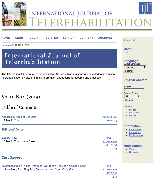
International Journal of Telerehabilitation
Innovating patient care in a connected world.The International Journal of Telerehabilitation, published by the University of Pittsburgh, University Library System, serves as a premier platform dedicated to advancing research in the emerging field of telerehabilitation. With an open access publishing model since 2009, this journal ensures that vital research findings are readily available to a diverse audience, which includes researchers, practitioners, and students. Covering key disciplines such as health informatics, rehabilitation, and computer science applications, the journal has earned notable rankings, positioning itself in the Q1 category within rehabilitation and Q2 in multiple related fields for 2023. Its impact is underscored by its rankings in Scopus, reflecting a strong commitment to enhancing accessibility and efficacy in health services. The journal endeavors to explore innovative approaches and technologies that enhance rehabilitation practices through telecommunication, paving the way for future developments in patient care and professional training. Researchers and professionals alike are encouraged to contribute to this vital discourse, making the journal an essential resource in the landscape of telehealth and rehabilitation.
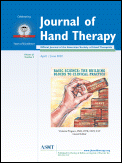
Journal of Hand Therapy
Innovating rehabilitation strategies for optimal patient outcomes.Welcome to the Journal of Hand Therapy, a premier publication dedicated to advancing the field of hand therapy through rigorous research and clinical insights. Published by Hanley & Belfus-Elsevier Inc, this esteemed journal, with ISSN 0894-1130 and E-ISSN 1545-004X, has been a cornerstone for professionals since its inception in 1987. With a commendable impact factor and categorized in the Q2 and Q1 quartiles for Physical Therapy, Sports Therapy, Rehabilitation, and Medicine, it ranks among the top journals in its fields, listed at #46/161 and #78/247 respectively in Scopus rankings. The journal aims to disseminate innovative research, evidence-based practices, and comprehensive reviews, addressing contemporary challenges in hand therapy, making it an essential resource for researchers, practitioners, and students alike. With a commitment to enhancing patient care, Journal of Hand Therapy is your gateway to the latest developments and trends in this critical area of rehabilitation.

Physiotherapy Practice and Research
Connecting research and practice for better health outcomes.Physiotherapy Practice and Research is a pivotal journal published by IOS PRESS that focuses on the dynamic field of rehabilitation and physiotherapy. Since its inception in 2009, this journal has provided a scholarly platform for researchers, clinicians, and students to disseminate innovative findings and practical applications in occupational therapy, sports medicine, and rehabilitation sciences. Although the journal currently holds Q3 and Q4 rankings in several categories, including occupational therapy and physical therapy, its impact in fostering research collaboration and informing practice is becoming increasingly important in advancing patient care and rehabilitation outcomes. With an ongoing commitment to open-access principles, the journal welcomes original research and review articles that address contemporary challenges and emerging practices within the field. As the journal continues to evolve, it aims to engage more deeply with the global research community, unlocking vital discussions that shape the future of physiotherapy.
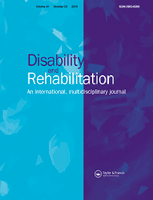
DISABILITY AND REHABILITATION
Advancing Knowledge to Enhance Disability Solutions.Disability and Rehabilitation, a prestigious journal published by Taylor & Francis Ltd, plays a critical role in the field of rehabilitation science. Since its inception in 1978, this journal has been dedicated to presenting high-quality research focused on improving the lives of individuals with disabilities through innovative rehabilitation techniques and healthcare solutions. With an impressive Q1 ranking in the Rehabilitation category and a Scopus rank of #24 out of 161, the journal is recognized for its significant impact and rigorous scholarly contributions, boasting an 85th percentile performance among peers. Although it operates under a subscription model, the journal remains a vital resource for researchers, healthcare professionals, and students seeking the latest insights and developments in the realm of disability and rehabilitation. Covering a broad spectrum of topics, from clinical practices to theoretical advancements, Disability and Rehabilitation continues to shape the future of rehabilitation research and practice worldwide.
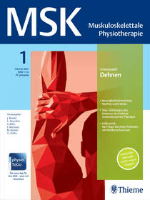
MSKMuskuloskelettale Physiotherapie
Advancing musculoskeletal health through innovative research.MSK Muskuloskelettale Physiotherapie is a leading academic journal dedicated to the field of musculoskeletal physiotherapy, exploring innovative practices, research findings, and clinical advancements. Published by GEORG THIEME VERLAG KG, a reputable name in medical publishing, this journal aims to serve as a vital resource for professionals, researchers, and students alike who are passionate about enhancing patient care and therapeutic techniques within the musculoskeletal domain. With its commitment to open access, MSK Muskuloskelettale Physiotherapie ensures that cutting-edge research is readily available to a global audience, facilitating the exchange of ideas and fostering collaboration across disciplines. As the field evolves, this journal seeks to provide a comprehensive platform for the latest developments, emerging methodologies, and transformative insights that are essential for advancing knowledge and practice in musculoskeletal health.

International Journal of Sports Physical Therapy
Empowering rehabilitation with innovative insights.Welcome to the International Journal of Sports Physical Therapy, a premier platform dedicated to advancing the field of sports therapy and rehabilitation. Published by the NORTH AMER SPORTS MEDICINE INST-NASMI, this open access journal has been vital in disseminating state-of-the-art research since its inception in 2011. With an ISSN of 2159-2896, it boasts a commendable standing within the academic community, achieving a Q2 ranking in 2023 across multiple categories, including Orthopedics and Sports Medicine, Physical Therapy, and Rehabilitation. Spanning diverse topics relevant to sports physical therapy, this journal serves as an invaluable resource for researchers, clinicians, and students alike, promoting best practices and innovative techniques in the field. By maintaining a commitment to high-quality peer-reviewed content, it not only contributes significantly to the existing body of knowledge but also fosters collaboration among professionals seeking to enhance patient care and rehabilitation outcomes.
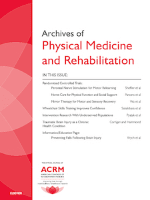
ARCHIVES OF PHYSICAL MEDICINE AND REHABILITATION
Elevating Standards in Physical Medicine and RehabilitationArchives of Physical Medicine and Rehabilitation, published by W B Saunders Co-Elsevier Inc., is a premier academic journal dedicated to the fields of physical therapy, sports therapy, and rehabilitation. Since its inception in 1945, it has evolved to provide a platform for groundbreaking research and insightful discourse that shapes clinical practice and enhances patient outcomes. With a notable impact factor and ranking in the top quartiles of its respective categories, this journal consistently showcases the most innovative studies, systematic reviews, and evidence-based practices that drive forward the understanding of rehabilitation medicine. As a vital resource for researchers, healthcare professionals, and students alike, it contributes significantly to the advancement of knowledge in rehabilitation sciences. With an aim to bridge the gap between research and practice, the journal invites contributions from all disciplines related to physical medicine and rehabilitation, fostering a collaborative environment that promotes the dissemination of impactful findings.

Archives of Physiotherapy
Exploring New Frontiers in Physical RehabilitationArchives of Physiotherapy is a prominent peer-reviewed journal published by SPRINGERNATURE, dedicated to advancing knowledge and practice in the fields of physical therapy, sports therapy, and rehabilitation. Since its inception in 2015, this Open Access journal has contributed to the dissemination of research that informs clinical practice and educates future professionals. With a commendable impact reflected in its Scopus rankings—placing it in the 72nd and 69th percentiles for Rehabilitation and Physical Therapy respectively—Archives of Physiotherapy stands as a critical resource for researchers, practitioners, and students striving to stay at the forefront of innovative therapy techniques and rehabilitative practices. The journal’s strategic focus on emerging trends and evidence-based methodologies makes it an invaluable platform for scholarly exchange and collaboration in the evolving landscape of healthcare. Now, serving audiences across the globe from its base in the United Kingdom, it is positioned to impact the future of rehabilitation science during its converged years from 2015 to 2024.
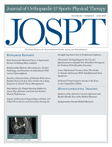
JOURNAL OF ORTHOPAEDIC & SPORTS PHYSICAL THERAPY
Enhancing Patient Outcomes through Groundbreaking InsightsJOURNAL OF ORTHOPAEDIC & SPORTS PHYSICAL THERAPY (JOSPT), published by J O S P T, is a premier peer-reviewed journal that has made significant contributions to the fields of orthopaedic and sports physical therapy since its inception in 1979. With an impressive impact factor and consistently ranking in the Q1 category for Medicine, Physical Therapy, Sports Therapy and Rehabilitation, and Sports Science in 2023, this journal stands at the forefront of evidence-based practice and innovative research. JOSPT aims to disseminate high-quality investigations, systematic reviews, and groundbreaking clinical practices that enhance both rehabilitation techniques and athletic performance. Notably, it ranks #12 among 247 in the Scopus database for Health Professions related to Physical Therapy, reflecting its influence and recognition within the academic community. As a comprehensive resource for researchers, clinicians, and students alike, JOSPT facilitates access to the latest developments in physical therapy, thereby promoting improved patient outcomes and advancing the science of rehabilitation.

PHYSIKALISCHE MEDIZIN REHABILITATIONSMEDIZIN KURORTMEDIZIN
Elevating Patient Care: The Journal of Rehabilitation ExcellencePHYSIKALISCHE MEDIZIN REHABILITATIONSMEDIZIN KURORTMEDIZIN, published by GEORG THIEME VERLAG KG, is a prominent journal dedicated to the fields of physical medicine, rehabilitation, and resort medicine. With its ISSN of 0940-6689 and E-ISSN 1439-085X, this journal has been at the forefront of disseminating essential research and innovative practices since its inception. Operating from Germany, it offers a crucial platform for professionals, researchers, and students engaged in exploring the latest advancements in rehabilitation methodologies and therapeutic practices. Although it currently holds a Q4 ranking in several categories including Physical Therapy and Rehabilitation, the journal is committed to enhancing its impact and visibility within the academic community. The journal publishes research, reviews, and clinical studies aimed at improving patient outcomes and advancing the science of rehabilitation. Subscribers can expect high-quality content that addresses both theoretical and practical aspects of rehabilitation medicine, ultimately contributing significantly to ongoing discussions and developments in the field.